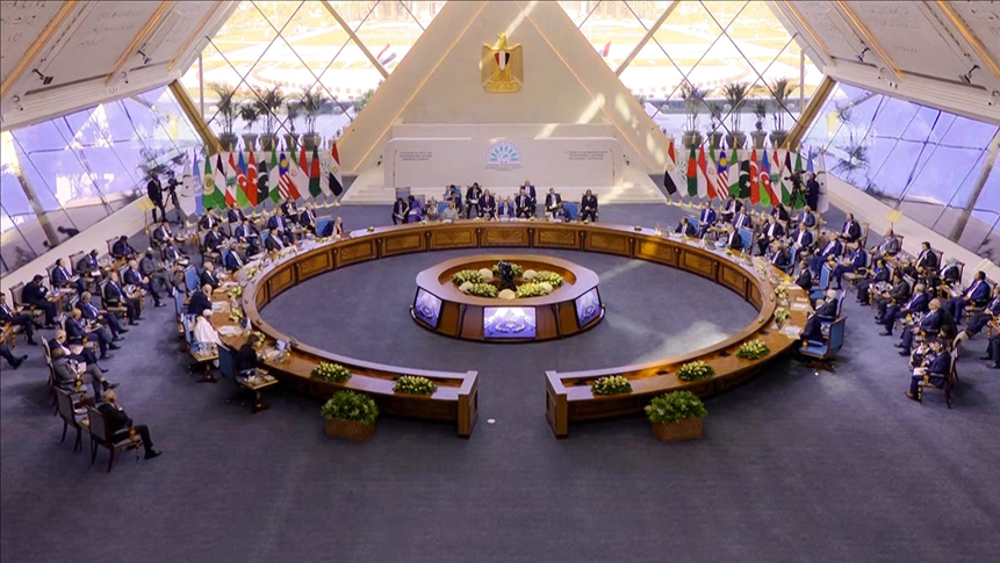High dollar rates spark criticisms in Iran
The runaway dollar has sparked serious concerns in Iran over what many believe could eventually prove costly for a country which has been planning for months to reap the benefits of the removal of the sanctions.
The surge of the greenback into the channel of above 40,000 rials prompted criticism against the government of President Hassan Rouhani in the media as was evident from the front pages of local newspapers on Tuesday.
Sharq newspaper – affiliated to the reformist camp – called on the government to pump dollars into the market to help ease the rising rates.
It questioned why Rouhani’s financial team was failing to do so, suggesting that the government was reaping the benefits of Iran's rial tumbling to a record low against the dollar.

“The government [of President Rouhani] is benefiting from the high rates of the dollar and is preventing the Central Bank of Iran (CBI) from interfering to control the market,” it wrote.
“If the government fails to control the rate of the dollar, it will lose its greatest achievement [the stabilization of the dollar rate] at a time when the country is preparing for next year's presidential election.”
At the end of trading on Monday, the rial was quoted in the free market at 41,500 to the dollar, weakening from around 41,250 on Sunday and 35,570 in mid-September. Before this month, the record low was about 40,000, hit in late 2012, Reuters reported.
Aftab-e Yazd highlighted remarks by unnamed CBI officials as well as Mohammad-Baqer Nobakht, the government spokesman, who said that the recent rise in the dollar rates was “temporary” and that it would soon subside.
“Around the same time each year when the world is preparing for the New Year holidays, there is a surge in the rates of the dollar,” the daily quoted Nobakht as saying, highlighting his suggestion that the dollar exchange rate was rising owing to "psychological factors."
“This is a result of psychological issues. The rise of 1,000 rials in the rate of the dollar is not acceptable to the government and hopefully the dollar will ease."
Pedram Soltani, one of the country’s top merchants, told Arman newspaper that the slide in rial could hurt Iran’s industrial production.
“The rapid rises in the rates of the dollar … will increase production costs,” said Soltani, who is also the first vice president of Iran's Chamber of Industries and Mines.
It is for the same reason that it is incumbent on the CBI to gradually increase the dollar exchange rate in tune with the inflation, he added. Any failure to do so would enable the dollar to gather force and release its energy into the market – what is today blamed for the recent surge, he warned.
Meanwhile, Reuters in a report put the blame for Iran's currency fall on fears over the potential risks to Iran’s economic plans once US President-elect Donald Trump takes office.
Reuters has specifically highlighted Trump’s promises to undermine a landmark nuclear deal that Iran sealed with world powers last year – what eventually led to the removal of some economic sanctions against the country.
Ebtekar newspaper also echoed warnings that the slide in the national currency value could undermine Rouhani’s popularity ahead of next year’s election.
When Rouhani took office, the dollar had already increased by 298.5 percent during the tenure of his predecessor Mahmoud Ahmadinejad (2005-2013), it wrote.
Rouhani was able to stabilize the currency market despite severe impacts of the sanctions as well as low oil prices.
“It was expected that the government would continue the previous trend in face of difficulties now that it is in the last year of its tenure.”
Iran’s economy grew 2.7% y/y in Sep quarter: CBI
VIDEO | Freelancers in Gaza strive to stay online amid genocide
Mikati demands Israel's withdrawal from south Lebanon
Yemeni army strikes Israeli military sites with drones
‘Clock ticking’: UNRWA slams unjustifiable killing of children in Gaza
BP to be sued in Britain for supplying oil to Israel
VIDEO | Press TV's news headlines
Israeli strikes on north Gaza hospital ‘extremely dangerous, terrifying’: Director










 This makes it easy to access the Press TV website
This makes it easy to access the Press TV website